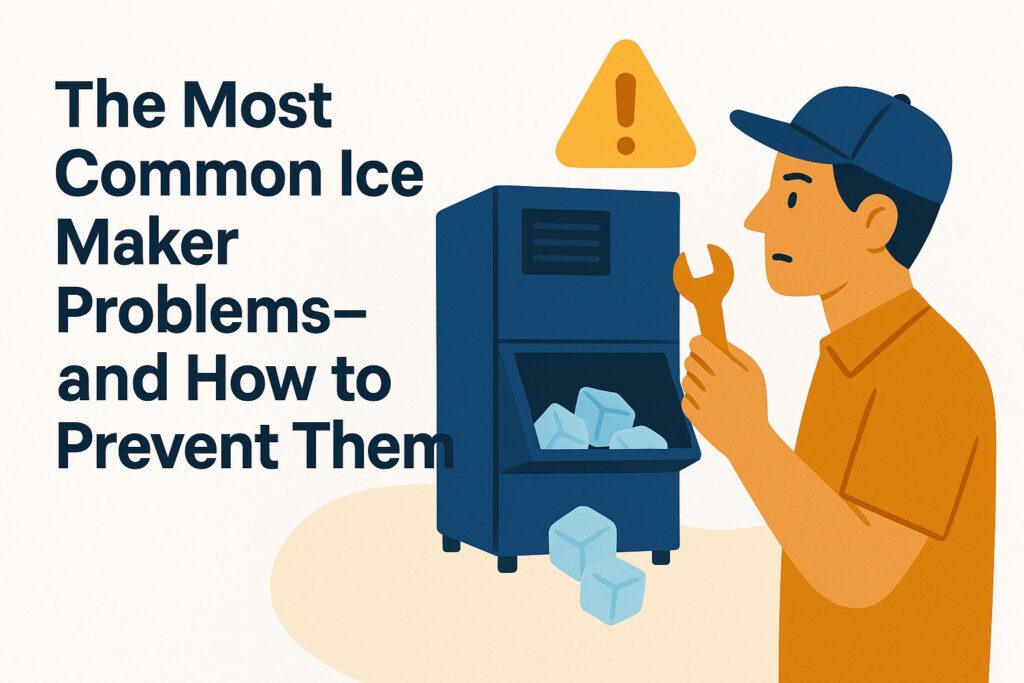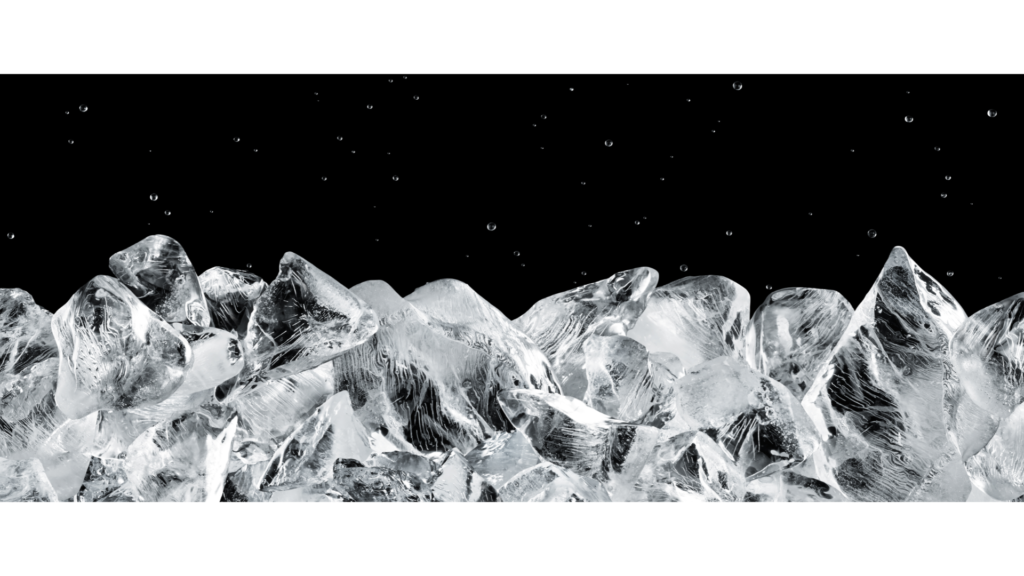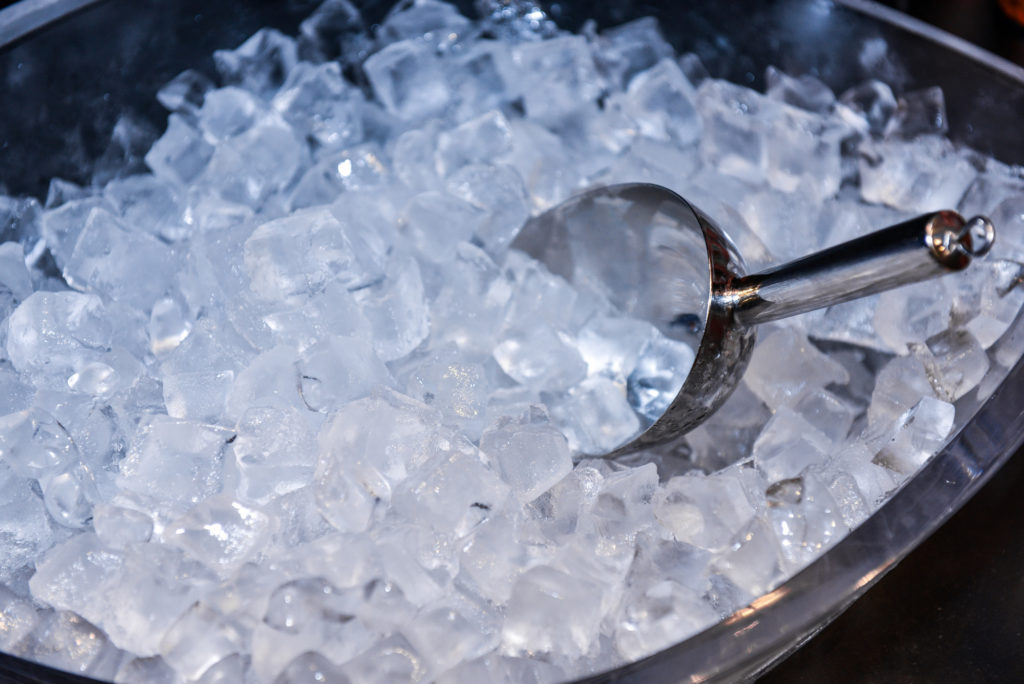
The Most Common Ice Maker Problems—and How to Prevent Them
Quick Answer: Common ice maker problems include water supply issues (blocked lines, clogged filters), temperature problems, control arm malfunctions, and mechanical failures. Prevention involves regular cleaning, filter replacement every 6 months, maintaining proper temperatures (0°F for freezers), and monthly inspections.
Common Ice Maker Problems & Solutions
Water Supply Problems
- Problem: Blocked or kinked water supply lines prevent water from reaching the ice maker
- Solution: Check for kinks, ensure water valve is open, replace clogged filters
Ice Production Issues
- Problem: Ice maker not producing ice or making insufficient amounts
- Solution: Verify control arm position, check freezer temperature (should be 0°F), inspect water inlet valve
Ice Quality Problems
- Problem: Small, hollow, cloudy, or bad-tasting ice cubes
- Solution: Check water pressure (20-80 PSI), replace water filter, clean mineral buildup
Mechanical Failures
- Problem: Strange noises, ice jams, or ejector assembly issues
- Solution: Inspect moving parts, clear ice blockages, lubricate mechanisms as needed
Temperature-Related Issues
- Problem: Ice maker freezing up or not freezing properly
- Solution: Adjust thermostat settings, ensure proper ventilation, check for frozen water lines
The Most Common Ice Maker Problems-and How to Prevent Them
Finding and fixing ice maker issues early can make your machine last longer and work better.
Common issues include insufficient ice production, strange noises, and water leaks.
For example, if your ice maker is only producing half the usual amount, check the water line for kinks or clogs. Using a cleaning solution in the system twice a year can stop mineral deposits, which is important for keeping it working well. Checking the door seals often makes sure that warm air stays out and doesn’t affect how well your ice maker works.
By doing these tasks early, you can prevent expensive fixes and keep things working well.
What is an Ice Maker?
An ice maker is a machine that automatically makes ice. It is usually installed in refrigerators, or as separate units, or on countertops.
When choosing an ice maker, consider your needs: built-in units like the Whirlpool under-counter model, which produces up to 28 pounds of ice daily, are perfect for large households.
Compact and portable options, such as the Edgestar countertop ice maker, are useful and can produce ice in 10 minutes, making them ideal for gatherings.
For small kitchens, look for small models that sit on countertops but still make a good amount of ice. Assess your space and usage frequency to select the best option for your lifestyle.
- Ensure control arm is DOWN (on position)
- Check that ice maker switch is ON
- Verify freezer temperature is 0°F (not colder)
- Look for ice blockages in bin or chute
- Confirm water supply valve is fully open
1. Importance of Ice Makers in Daily Life
Ice makers simplify daily activities by providing quick access to ice, enhancing social events, and preserving food freshness.
They can produce an impressive 26 pounds of ice daily, addressing the estimated 70 pounds of ice consumed annually by the typical ice production rate of the average American.
Having fresh ice ready for parties can make it easier to prepare drinks. Portable ice makers are extremely helpful during power outages because they keep food cold and safe.
Consider investing in a countertop model for smaller spaces or an under-counter version for a built-in feel, both of which offer easy access while enhancing your kitchen’s functionality.

2. Common Ice Maker Problems
Ice makers can experience problems that stop them from working properly, like not producing enough ice or making odd noises. For an extensive analysis of these issues, our comprehensive study on whether commercial ice makers need a drain provides valuable insights.
Ice Maker Not Producing Ice
If your ice maker isn’t producing ice, it could be due to problems with the water supply, such as clogs or damaged components.
- Start by checking the water supply line. Make sure the hose is smooth and not blocked by ice, as this can stop water from moving through.
- Next, inspect the water filter; a clogged filter (typically costing around $20) should be replaced to restore proper function.
- Verify that the ice maker is powered on and its settings are correctly configured. Refer to the user manual for instructions on resetting the appliance or adjusting the ice production settings.
- Most issues can be diagnosed within 30 minutes when methodically examined.
Ice Maker Producing Small or Hollow Ice Cubes
Small or hollow ice cubes often indicate water pressure issues or a failing ice maker thermostat, both of which can be remedied easily.
To check your water pressure, use a pressure gauge, which can be purchased for around $15-$30 at hardware stores. Simply attach it to the nearest faucet and turn on the water; readings should ideally fall between 20-80 PSI.
If pressure is low, inspect the water supply line for kinks or blockages. If the thermostat, typically costing $30-$70, is faulty, locate it inside the ice maker and replace it according to the manufacturer’s instructions.
Regular upkeep and maintenance tips are needed for the best performance and ice quality.
Ice Maker Freezing Up and Frost Buildup
An ice maker freezing up can lead to ice blockages, preventing proper ice production and potentially damaging the unit.
- To remedy this issue, begin by unplugging the ice maker and inspecting the ice bin for any ice backups.
- Carefully remove the bin and run warm water over it to melt any stubborn ice.
- Next, check for proper airflow around the appliance; make sure vents aren’t blocked by dust or other obstructions.
- Make sure the water supply line is straight and not icy.
- After addressing these areas, plug the unit back in and monitor it over the next few days to confirm normal operation.
Ice Maker Leaking Water
Water leaks from your ice maker can cause floor damage and may indicate issues with the water supply line or seals.
To troubleshoot the leak, first check the water supply hose for any cracks or kinks; these can often be the culprit.
Next, check the seals around the ice maker to make sure they are secure and not damaged. If you notice any wear, consider replacing the seals, which can cost between $10 and $30.
If the leak persists after these checks, it may be wise to call a professional, with repair costs typically ranging from $50 to $150, depending on the complexity of the issue.
Ice Maker Making Unusual Noises
Unusual noise issues from an ice maker can signal mechanical failures, such as worn-out components or lack of lubrication.
Common sounds include buzzing, which may indicate a block in the water supply, and grinding, often a sign of a faulty motor.
To troubleshoot, first consult the user manual for specific guidance on your model; this can save time and help pinpoint issues.
Consider the replacement costs-compressor units can range from $150 to $400, while smaller components like fan motors typically cost between $30 and $100.
Doing maintenance promptly and addressing these noises soon can extend the life of your appliance.

Ice Maker Producing Too Much Ice
When your ice maker won’t stop producing ice, it can overflow the bin and create a mess in your freezer.
Primary Causes:
- Broken Control Arm: The metal arm that detects ice levels may be damaged or stuck in the down position
- Faulty Ice Level Sensor: Electronic sensors can malfunction and fail to detect when the bin is full
- Misaligned Ice Bin: If the bin isn’t positioned correctly, it can’t trigger the stop mechanism
- Missing Shelf: Some models require a specific shelf to elevate the ice bin for proper sensor function
Step-by-Step Solution:
- Check Control Arm Position: Ensure the wire arm moves freely up and down (should stop ice production when raised)
- Inspect Ice Bin Placement: Remove and reposition the ice bin to ensure proper alignment
- Test Sensor Function: Clean any ice buildup around electronic sensors with a soft cloth
- Verify Shelf Installation: Check your manual to confirm all required shelves are in place
- Manual Override: If problems persist, use the ON/OFF switch to control ice production manually
Replacement Costs: Control arm replacement: $25-$60 | Electronic sensor repair: $75-$150
Ice Maker Control Arm Issues
The control arm is a simple but crucial component that regulates ice production by detecting bin levels.
Common Control Arm Problems:
- Stuck in Up Position: Ice maker won’t produce ice
- Stuck in Down Position: Ice maker won’t stop producing ice
- Loose Connection: Intermittent ice production
- Physical Damage: Bent or broken arm prevents proper function
Troubleshooting Steps:
- Visual Inspection: Look for obvious damage, bends, or obstructions
- Manual Test: Gently move the arm up and down to check for smooth operation
- Connection Check: Ensure the arm is properly connected to the ice maker mechanism
- Cleaning: Remove ice buildup that might prevent proper movement
- Adjustment: Some arms can be bent slightly to restore proper positioning
When to Replace: If the arm is cracked, severely bent, or the connection point is damaged, replacement is necessary.
Frozen Water Inlet Tube Problems
A frozen water inlet tube prevents water from reaching the ice maker, stopping ice production entirely.
Why It Happens:
- Freezer Temperature Too Low: Settings below 0°F can freeze the water line
- Poor Insulation: Inadequate insulation around the water line
- Seasonal Issues: More common in winter when ambient temperatures drop
- Air Leaks: Cold air infiltration around the tube connection points
Safe Thawing Methods:
- Adjust Temperature: Raise freezer temperature to 0°F and wait 24 hours
- Hair Dryer Method: Use warm (not hot) air to gently thaw the tube
- Warm Towel Application: Place warm, damp towels around the accessible portions
- Professional Service: For internal tubes, professional service is recommended
Prevention Tips:
- Maintain freezer at exactly 0°F (not colder)
- Insulate exposed water lines
- Check door seals to prevent cold air infiltration
- Schedule professional inspection before winter months
Ice Quality Problems (Cloudy, Bad Taste)
Poor ice quality affects both taste and appearance, indicating water supply or cleanliness issues.
Common Quality Issues:
Cloudy Ice:
- Cause: Air bubbles trapped during rapid freezing or high mineral content
- Solution: Slow down freezing process by adjusting temperature, install water softener
Bad Taste/Odor:
- Cause: Expired water filter, old ice, or absorption of freezer odors
- Solution: Replace filter every 6 months, clean ice bin monthly, wrap freezer foods properly
White Flakes in Ice:
- Cause: Calcium/magnesium mineral deposits from hard water
- Solution: Install water filter, descale ice maker quarterly with vinegar solution
Small or Malformed Cubes:
- Cause: Low water pressure or partially blocked filter
- Solution: Check water pressure (should be 20-80 PSI), replace filter, clear line blockages
Cleaning Protocol:
- Empty ice bin completely
- Mix equal parts white vinegar and water
- Run cleaning solution through one complete cycle
- Rinse with fresh water for 2-3 cycles
- Wipe down all accessible surfaces
- Replace water filter if older than 6 months
Ejector Assembly Failures
The ejector assembly moves ice from the mold into the bin and can fail due to mechanical wear.
Signs of Ejector Problems:
- Ice doesn’t drop from mold after forming
- Grinding or clicking noises during harvest cycle
- Ice cubes stuck to the ejector fingers
- Partial ice ejection leaving some cubes behind
Common Failures:
- Motor Burnout: Overheating from ice blockages ($150-$300 to replace)
- Gear Wear: Stripped gears prevent proper movement ($75-$150 repair)
- Frozen Mechanism: Ice buildup prevents ejector movement
- Electrical Issues: Faulty wiring or connections
DIY Troubleshooting:
- Clear Ice Blockages: Remove any ice stuck around ejector fingers
- Manual Cycle Test: Initiate a harvest cycle to observe ejector movement
- Temperature Check: Ensure proper operating temperature (0°F)
- Visual Inspection: Look for obvious damage or misalignment
- Professional Assessment: Complex ejector repairs require technical expertise
Maintenance Tips:
- Keep ice maker clean to prevent mineral buildup on ejector parts
- Don’t force stuck ice – allow natural melting
- Replace water filter regularly to reduce mineral deposits
- Schedule annual professional cleaning for optimal performance
3. Causes of Ice Maker Issues
Figuring out the main reasons for ice maker issues is important for fixing and keeping them in good working order. Understanding the role of accessories and components, such as whether commercial ice makers require a drain, can be crucial in diagnosing problems (our guide on this topic provides detailed insights).
Water Supply Problems
Water supply issues are the primary culprits behind many ice maker failures, often stemming from low pressure or blockages.
To identify these problems, start by checking the water line for kinks or leaks.
Use a multimeter to test for electrical issues in the supply system, ensuring it operates within the recommended voltage range.
If you suspect low pressure, install a pressure gauge on the water line; typical readings should be between 30-80 PSI.
If repairs are necessary, expect plumbing costs to range from $100 to $300, depending on the complexity of the issue.
Regular maintenance and checking for installation issues can prevent larger problems down the line.
Temperature Fluctuations
Fluctuations in temperature can significantly affect an ice maker’s efficiency, leading to inconsistent ice production.
To maintain optimal ice production, calibrate your thermostat settings between 0 degreesF to 5 degreesF. Begin by using a reliable thermometer to measure the temperature of the ice bin.
If it’s outside this recommended range, adjust the thermostat accordingly, allowing 24 hours for the changes to take effect. Check the temperature often, especially when the weather changes, to keep performance steady.
If problems continue, try cleaning the unit’s condenser coils and make sure it has proper ventilation. These steps are important for it to work well.
Mechanical Failures and Service Technician Needs
Mechanical failures, such as broken gears or faulty motors, can halt ice production entirely and may require professional service.
To diagnose these issues, start with a visual inspection. Check for leaks or loose components, which can indicate wear.
Next, listen for unusual sounds while the machine operates; grinding noises often suggest gear damage.
For common mechanical parts, repair costs can vary:
- Replacing a gear might range from $50 to $200.
- While a motor replacement could be $200 to $500.
If troubleshooting does not resolve the issue, consider consulting a technician who specializes in ice machine repairs.
Electrical Issues
Electrical issues, including faulty wiring or blown fuses, can cause your ice maker to stop working altogether.
To diagnose the electrical problems safely, first, unplug the unit.
Using a multimeter, set it to the continuity setting to check for voltage; position the probes on the fuse terminals. If there’s no continuity, replace the blown fuse with one of the same rating, typically found in the user manual.
When testing voltage, make sure the multimeter tips touch only the live wires. Be careful to avoid touching any metal surfaces.
Always inspect wires for wear and tear, as energy efficiency can be impacted by invisible damage.

4. Preventive Measures
Using preventive steps can greatly cut down on common ice maker problems, keeping it working well.
Regular Maintenance, Cleaning, and Filter Changes
Regular upkeep and cleaning can stop accumulation and extend the lifespan of your ice maker. It’s best to do this every 3-6 months.
- Start by unplugging the ice maker and emptying the water reservoir to prevent any ice buildup.
- Use a mixture of equal parts vinegar and water to descale the interior components; this will effectively dissolve mineral buildup and improve operational efficiency.
- Don’t forget to check the water lines for blockages, which can occur from ice or debris, affecting water quality.
- Cleaning kits, available for around $20, often include brushes and specialized cleaners for better maintenance of home appliances.
- After cleaning everything well, rinse all parts with clean water to get rid of any leftover dirt. Then, put everything back together and start the machine again to keep the ice maker warranty active.
- Check and clean ice bin thoroughly
- Inspect control arm for proper movement
- Verify freezer temperature (0°F)
- Clear any ice blockages from chute
- Wipe down exterior and accessible interior
- Test ice quality and taste
- Deep clean with vinegar solution
- Descale internal components
- Inspect water line connections
- Check door seals and gaskets
- Verify proper water pressure (20-80 PSI)
- Clean condenser coils
- Replace water filter (most important!)
- Professional inspection recommended
- Lubricate moving parts as needed
- Check electrical connections
- Test all safety features
- Update maintenance log
- Complete professional service
- Replace worn gaskets/seals
- Calibrate temperature controls
- Assess overall unit condition
- Plan for potential replacements
- Review warranty status
Monthly Cleaning: Prevents mineral buildup that causes mechanical failures and poor ice quality. Takes only 15 minutes but saves hundreds in repairs.
Total yearly cost: $135-230 (vs. $300-800 for major repairs)
Monitoring Water Supply
Regularly checking your water supply will help keep your ice maker running smoothly without any breaks, avoiding potential plumbing issues.
To effectively monitor water pressure, invest in a water pressure gauge-available at home improvement stores for under $30. Regular pressure tests can help identify problems early.
Regularly check your home’s water lines and valves for leaks or corrosion, as these issues can affect pressure.
Look at the system every six months or before times when you use it a lot, like summer, when you use more water. This will help avoid problems with the ice maker not working.
Familiarize yourself with the optimal pressure range (40-60 psi) to identify any significant deviations that might indicate a problem.
Checking Temperature Settings
It’s important to check and keep the temperature settings in your ice maker right to get the best ice production.
The ideal temperature range for ice makers is typically between 0 degreesF and 5 degreesF to prevent frozen components. To keep the results steady, frequently measure the temperature with a dependable thermometer located inside the ice section.
If the temperature is too high, think about changing the settings on programmable thermostats, like the Nest or ecobee, to manage energy consumption. These devices let you monitor and control the temperature from a distance.
Cleaning the ice maker and its components every few months ensures it functions properly, preventing problems like condensation or ice mold.
Inspecting Mechanical Components
Regular inspections of mechanical components can help identify potential issues before they escalate into major problems, like compressor issues.
To effectively inspect mechanical components, focus on key areas like gears, belts, and motors, ensuring there are no refrigerant leaks.
Start by checking gear alignment and signs of wear; a slight misalignment can lead to significant damage over time. Check belts for any damage or looseness, and tighten them if necessary to make sure they work correctly, preventing ice dispenser malfunctions. Motor evaluations should include checking wiring for corrosion or frayed edges.
Try to perform these checks every month as part of your regular maintenance plan. Make a list that covers each part, explains what to check, and includes a spot to write down any problems found for easy tracking.

5. Troubleshooting Tips
A good method for solving problems can help you avoid wasting time and money when fixing ice maker problems, including common problems and software glitches.
Step-by-Step Troubleshooting Guide
Follow this step-by-step troubleshooting guide to diagnose and resolve common ice maker issues effectively, including ice harvesting problems.
- First, make sure the ice maker is plugged into a working outlet.
- Next, inspect the water line for kinks or blockages that might prevent water flow.
- Evaluate the settings to confirm that the ice maker is activated; sometimes, a simple switch can be mistakenly turned off.
- Look inside the ice maker for anything blocking it to make sure the ice cubes are the right size.
Each step should only take about 5-10 minutes, allowing for a quick resolution of most issues.
When to Call a Professional
Knowing when to call a professional can prevent further damage and save costs in the long run.
Frequent water drips under sinks, strange sounds from appliances, or lights that keep blinking are signs you should get professional help to address sensor failures. If these issues persist after minor adjustments, it’s time to consult a technician.
To find reliable service technicians, check reviews on platforms like Angie’s List or Yelp, ask for recommendations from friends, and verify credentials such as licenses and insurance.
A technician will fix the existing problem and prevent other issues with regular maintenance, cutting down on the need for service calls.
| Problem Type | Repair Cost | New Unit Cost | Recommendation |
|---|---|---|---|
| Clogged Water Filter | $20-40 | $200-800 | REPAIR |
| Water Inlet Valve | $75-150 | $200-800 | REPAIR |
| Control Arm Issues | $25-80 | $200-800 | REPAIR |
| Ejector Assembly | $150-300 | $200-800 | DEPENDS |
| Compressor Failure | $300-500 | $200-800 | REPLACE |
| Multiple Issues | $200-600 | $200-800 | REPLACE |
| Unit Over 10 Years | $100-400 | $200-800 | REPLACE |
• Repair cost is less than 50% of replacement cost
• Unit is less than 7 years old
• Only one component needs fixing
• You’re satisfied with current ice production
Choose REPLACE when:
• Repair cost exceeds 60% of new unit price
• Unit is over 10 years old
• Multiple components are failing
• Frequent repairs are needed (3+ per year)
• Energy efficiency is poor
Consider upgrading to: Energy-efficient models, higher capacity units, or smart ice makers with diagnostic features.
Recap of Common Problems and Solutions
Common problems with ice makers include not producing enough ice, leaking, and making odd noises. These issues often have easy solutions that you can do yourself.
If your ice maker isn’t producing enough ice, inspect the water line for bends or blockages, and confirm the ice maker is set to the right temperature. Check refrigerant levels as well.
Check the water inlet valve and seals for any damage if there is a leak, which can be a common result of user errors. If you hear strange sounds, clean the condenser coils and check that the appliance is even to prevent drain problems.
You can usually fix problems yourself with simple tools, such as a multimeter for checking electrical parts or a wrench set for tightening connections. Refer to ice maker reviews for more consumer advice.
About the Author
Ethan Cole is a business growth advisor and serial entrepreneur with over two decades of hands-on experience helping startups and small businesses thrive. With a background in finance and operations, he’s led multiple companies from early-stage concepts to multi-million-dollar exits. Ethan specializes in scaling strategies, cost reduction, and building systems that support sustainable growth. As a content contributor for Kwote Advisor, he shares practical insights to help business owners make smarter decisions when launching, managing, and expanding their ventures.

